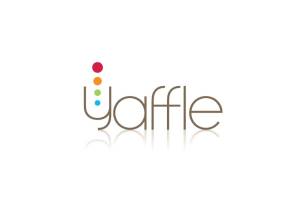The KM Solution Pt 2: “So What”
So what if cultural transparency is a problem: KM services, infrastructure and evaluation
In a previous blog we developed the thinking that cultural transparency (or a lack thereof) between researchers and their non academic research stakeholders is the underlying problem that challenges knowledge mobilization (http://researchimpact.wordpress.com/2009/08/14/the-km-solution-part-1-%E2%80%9Cwhat%E2%80%9D/). Despite this sushi inspired analysis, one is forced to ask “so what”. We know KM works. We have published on the top 10 lessons learned from knowledge mobilization (http://researchimpact.wordpress.com/2009/07/28/what-do-machiavelli-and-dr-seuss-have-to-do-with-knowledge-mobilization/) so how does knowing the problem help with implementing the solution?
This deeper understanding allows us to refine services and develop infrastructure aimed at increasing cultural transparency and allows us to develop more robust evaluation protocols so that we can better demonstrate the impact of turning research into action.
Services: Understanding the problem of cultural transparency allows us to develop specialized services to address this barrier and foster research based relationships between researchers and their non academic counterparts.
- knowledge brokers to serve as cultural ambassadors supporting often challenging conversations and partnerships between researchers and non academic research stakeholders.
- support for engaged scholarship such as the Major Collaborative Research Initiative and Community University Research Alliance programs of the Social Sciences and Humanities Research Council (www.sshrc.ca)
- training academics in clear language writing that makes research and researchers accessible to non academic research stakeholders such as ResearchImpact’s ResearchSnapshot series (www.researchimpact.ca/researchsearch)


Infrastructure: As identified in Part 1 (“What”), social media has a role to play in facilitating transparency by helping to form and support distributed networks in a community of practice model where loose connections must form before collaboration can begin. We have previously written (http://researchimpact.wordpress.com/2009/07/21/researchimpact-says-o3-is-an-overall-outstanding-opportunity/) about one social media platform, O3 that ResearchImpact is starting to use to link researchers and their partners. Infrastructure can also include databases such as yaffle (www.yaffle.ca) and should link to existing tools that support access to research such as Canada’s Synergies project (http://www.synergiescanada.org/) and the CANARIE broadband network (www.canarie.ca).


“networks are the infrastructure for doing business in the future.”
Wierarchy, June 27, 2009
Evaluation: A better understanding of the problem (cultural transparency) allows us to develop a new logic model for KM. Investing in services and infrastructure will result in one specific output: an increase in cultural transparency. This allows us to construct outcomes based on increased cultural transparency including: collaboration, sharing (of people, information and resources), trust, relevance, access, awareness and engagement. These outcomes then allow for the identification of impacts including changes in: behaviour of researchers and decision makers; reputation of the university and placement of HQP. For each of these outcomes and impacts indicators can be developed and measured.
Application of social media to support communities of practice also allows consideration of an emerging metric, Return on Investment on Interaction (http://blog.wirearchy.com/2009/06/27/productivity-in-a-networked-era-assessing-roii-return-on-investment-in-interaction/) as a means of evaluating the impact of KM. ROII is a way of measuring the creation of economic value out of intangibles including the value of an organization’s networks. Intangible assets that are affected by interactions (networks, part of KM infrastructure) include brand, reputation, ideas, relationships and know-how but evaluating these softer assets requires social science evaluation methods such as surveys and focus groups rather than counting tangible assets such as dollars or square feet. York is currently engaged in just such an evaluation employing social science methodologies to evaluate the last 3 years of York and UVic’s KM units and the ResearchImpact partnership. Stay tuned closer to the end of 2009 for the results of that evaluation.
Understanding the “so what” of cultural transparency creates a theoretical underpinning of KM allowing us to develop and evaluate better KM services and infrastructure. By enhancing cultural transparency knowledge mobilization is your passport to social innovation.

Stay tuned to Mobilize This! for the third and final installment of this series -The KM Solution: “Now What”